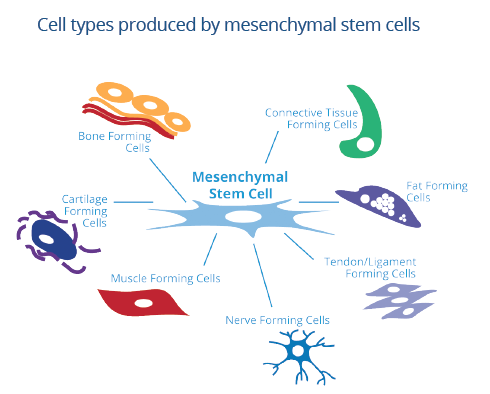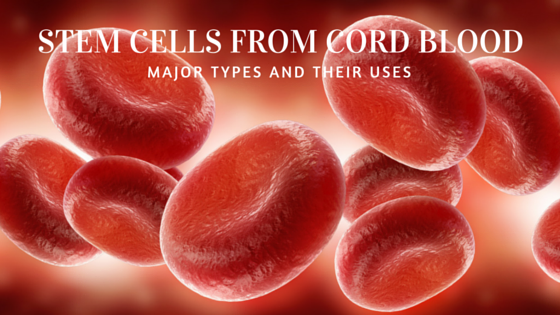
Research in the last few years has shown that umbilical cord blood contains stem cells that can repair and regenerate damaged or diseased tissues. Cord blood stem cells have the ability to transform into other tissues and can cure diseases that are difficult to treat through other therapies.
Umbilical cord blood contains many types of stem cells. Each has its unique molecular and cellular properties and therefore each type of stem cell is used to cure different types of diseases.
Here are the 3 major types of stem cells in cord blood and their uses:
1. Hematopoietic Stem Cells (HSCs)
HSCs are the type of stem cells that form blood and immune cells. They renew blood and produce new blood cells daily. Umbilical cord blood contains HSCs and has antigens like CD133, CD34 and CD45. HSCs from the cord blood are more suitable for transplantation in children. Also HSCs have lower Graft versus Host Disease (GvHD) complications where the donor cells attack the tissues of the recipient.
HSCs from the cord blood are multi-potent and have plasticity which means they have the ability to form into different types of stem cells.

HSCs from the cord blood may treat diseases like:
- Leukemia
- Lymphoma
- Hodgkin’s Disease
- Multiple Myeloma
This type of stem cells have the ability to self renew and are being studied to see their use in gene therapy. If successful they will be used to deliver genes to repair damaged cells. They are also being tried for auto immune diseases like diabetes, rheumatoid arthritis, etc.
2. Mesenchymal Stem Cells (MSCs)
MSCs are a multi-potent type of stem cells and are similar to MSCs found in the bone marrow. However, unlike HSCs, MSCs do not generate blood cells. MSCs can maintain their multi-potency and they have an immense capacity for self renewal. They are easy to isolate and can be expanded in culture. Their rate of proliferation is much higher than that of bone marrow MSCs.
Clinical tests are being conducted which show that MSCs would be able to treat:
- Cerebral Palsy
- Heart Disease
- Stroke
- Type 1 and Type 2 Diabetes
- Liver and Kidney Failure
- Parkinson’s Disease
- Alzheimer’s Disease
- Damaged Spinal Cord
- Burns
- Cartilage Injuries
The advantage of MSCs is that they have the ability to inhibit inflammation and they also secrete growth factors that help tissue repair. They can also differentiate into many cell types like bone cells, fat cells, cartilage and also neural cells.

MSCs are increasingly being used in regenerative medicine and could regenerate:
- Muscle, Cartilage and Bone
- Marrow
- Adipose Tissue
- Tendon/Ligament
- Multiple Sclerosis
- Connective Tissue
3. Very Small Embryonic-Like Stem Cells (VSELs)
VSELs are stem cells that are very small in size as the name suggests. They are non-hematopoietic stem cells and display the existence of some very rare cells which contain pluripotent stem cells. Clinical studies are ongoing but some scientists say that VSELs have the potential to be used for regenerative healing.
VSELs could have the ability to regenerate:
- Neural Cells
- Cardiac Muscle
- Blood Cells
Learn more about very small embryonic-like stem cells in cord blood here >>
The HSCs, MSCs and VSELs are just a few among many types of stem cells in cord blood. More clinical trials using cord blood stem cells are being conducted which means that it is important to consider saving your baby’s cord blood so you won’t miss out on the present and future medical benefits of using cord blood stem cells.
{{cta(‘ae01fd22-6f64-4988-9019-a8571f755c1c’)}}


